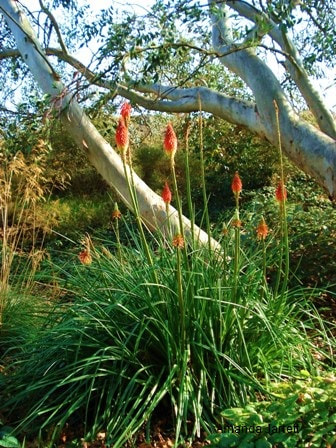Red Hot Poker Plant Hardiness Zone
This plant is hardy in zones 5 - 9 Zones are based on the lowest average temperature an area is expected to receive during the winter. They are used to determine whether a plant is likely to be perennial in your area. If your zone is equal to or higher than the zone listed for the plant, it. The first opportunity to plant red hot pokers in Zone 7a can be figured out by using the USDA zone info. Planting Calendar for Red Hot Pokers Red Hot Pokers are one of those plants that can tolerate quite a bit of cold weather which means that you can plant them a quite a bit earlier than more sensitive plants. Hardiness Zones Torch lily does well in zones 5-9. In the colder zones, be sure to lay down 2-3 inches of mulch before winter to protect the crowns of the plant. Uses for Red Hot Pokers.
- Attributes:
- Genus:
- Kniphofia
- Species:
- uvaria
- Family:
- Asphodelaceae
- Life Cycle:
- Bulb
- Perennial
- Recommended Propagation Strategy:
- Division
- Seed
- Country Or Region Of Origin:
- South West & South Cape Province

- Whole Plant Traits:
- Plant Type:
- Perennial
- Habit/Form:
- Erect
- Cultural Conditions:
- Light:
- Full sun (6 or more hours of direct sunlight a day)
- Soil Drainage:
- Good Drainage
- NC Region:
- Coastal
- Mountains
- Piedmont
- USDA Plant Hardiness Zone:
- 5a, 5b, 6b, 6a, 7a, 7b, 8a, 8b, 9b, 9a
Red Hot Poker Plant Hardiness Zone 5b
- Flowers:
- Flower Color:
- Cream/Tan
- Gold/Yellow
- Green
- Orange
- Red/Burgundy
- Flower Inflorescence:
- Spike
- Flower Value To Gardener:
- Showy
- Flower Bloom Time:
- Summer
- Flower Shape:
- Tubular
- Flower Description:
- Flowering spikes of pale yellow, ivory, apricot, orange and red. It flowers from the bottom upward, and the bright orange flowers fade to yellowish green as they senesce, resulting in a two toned spike with orange flowers at the top and yellowish ones below.
Plant Hardiness Zones 2020
- Leaves:
- Leaf Color:
- Green
- Leaf Type:
- Simple
- Leaf Arrangement:
- Rosulate
- Leaf Shape:
- Lanceolate
- Linear
- Hairs Present:
- No
- Leaf Description:
- Long, sword-like, basal
- Stem:
- Stem Is Aromatic:
- No
- Landscape:
- Attracts:
- Butterflies
- Hummingbirds
- Pollinators
- Resistance To Challenges:
- Deer
- Salt
The first year these incredible birds came to the Kniphofia in the garden it was indeed a sight to behold. The Oriole is one of the most beautifully colored birds and just happens to be a perfect color match for the spiky Kniphofia flowers. This patch of Kniphofia is now in its sixth year and every year the Orioles visit. It is the only time they are seen here and this is the only plant they have been spotted visiting for any length of time. The nectar must be mighty tasty because the birds work relentlessly to sip from each flower tube. Usually there is never more than one Oriole in the patch at a time. This year though a young Oriole followed an adult into their Garden of Eden. And, there are times when the hummingbirds get pretty possessive of the nectar rich flowers, but no matter how much the little hummers buzz around they cannot run off the Orioles. Kniphofias bloom in early spring and it takes a few blooms before the Orioles show up.
In the picture above, it is easy to see the grassy nature of the Kniphofia which adds extra texture and interest to the garden. This patch has self seeded so there are varying color patterns among the flowers but they are all in the yellow to orange range. The flowering spikes can reach 5 feet tall. The bloom right under the bird is shorter because it is newly emerging and smaller because it has not yet unfurled its flowers. New flower spikes continue to be produced for many months which lengthens the stay of the Oriole. There does not seem to be any advantage to removing spent flower stalks to encourage more bloom.